
- Home
- India
- World
- Premium
- THE FEDERAL SPECIAL
- Analysis
- States
- Perspective
- Videos
- Sports
- Education
- Entertainment
- Elections
- Features
- Health
- Business
- Series
- In memoriam: Sheikh Mujibur Rahman
- Bishnoi's Men
- NEET TANGLE
- Economy Series
- Earth Day
- Kashmir’s Frozen Turbulence
- India@75
- The legend of Ramjanmabhoomi
- Liberalisation@30
- How to tame a dragon
- Celebrating biodiversity
- Farm Matters
- 50 days of solitude
- Bringing Migrants Home
- Budget 2020
- Jharkhand Votes
- The Federal Investigates
- The Federal Impact
- Vanishing Sand
- Gandhi @ 150
- Andhra Today
- Field report
- Operation Gulmarg
- Pandemic @1 Mn in India
- The Federal Year-End
- The Zero Year
- Science
- Brand studio
- Newsletter
- Elections 2024
- Events
- Home
- IndiaIndia
- World
- Analysis
- StatesStates
- PerspectivePerspective
- VideosVideos
- Sports
- Education
- Entertainment
- ElectionsElections
- Features
- Health
- BusinessBusiness
- Premium
- Loading...
Premium - Events
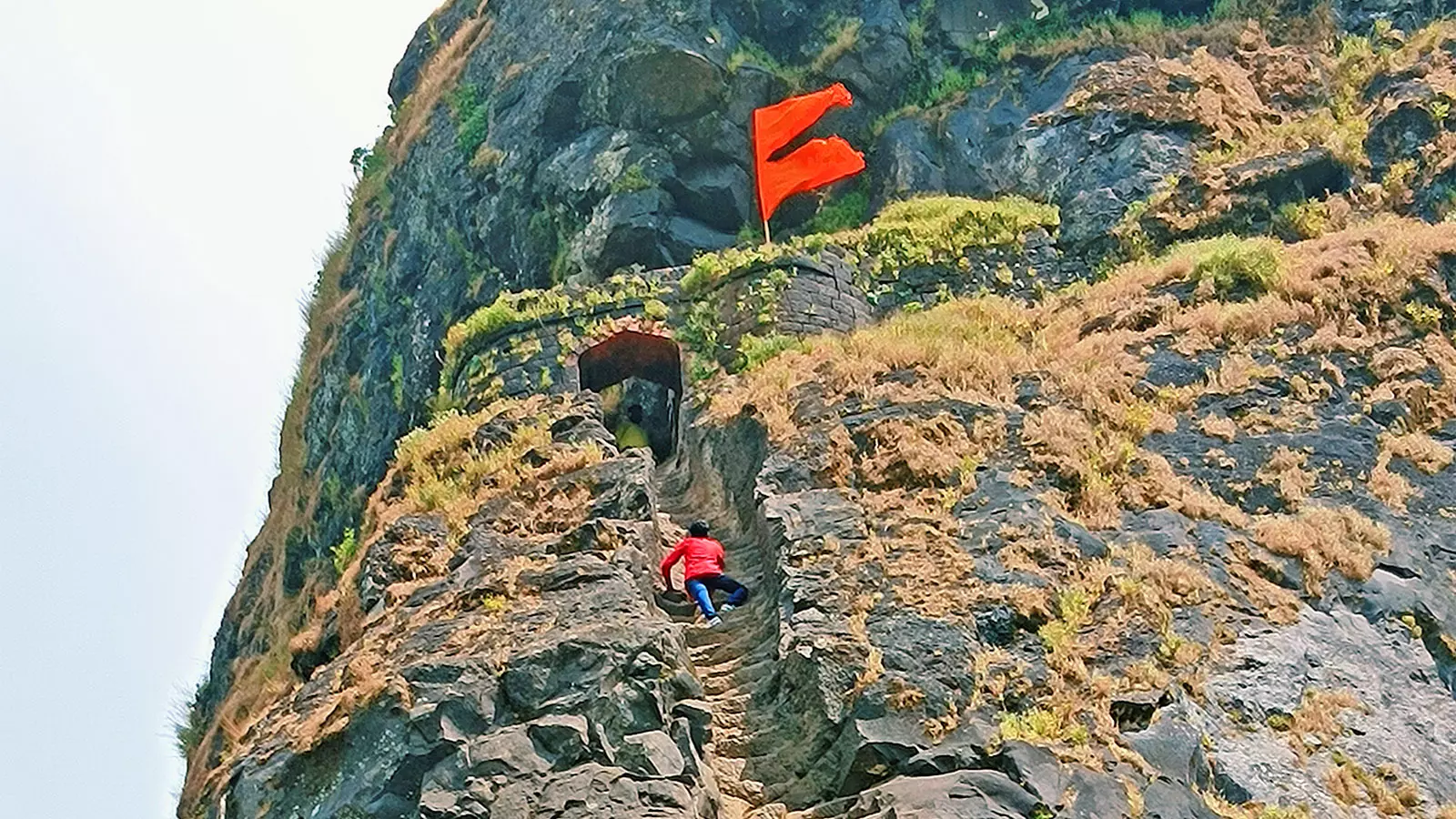
When Asha Ambade climbed the risky and narrow rock steps to reach the top of the Harihar Fort in 2020, it made news. A video went viral in which the 68-year-old, wrapped in a white saree, manoeuvred the 80-degree vertically inclined rock-steps to reach atop the hill fort, which was built during the era of the Seuna or Yadava dynasty (AD 1187 to 1317), to observe the trade route that...
When Asha Ambade climbed the risky and narrow rock steps to reach the top of the Harihar Fort in 2020, it made news. A video went viral in which the 68-year-old, wrapped in a white saree, manoeuvred the 80-degree vertically inclined rock-steps to reach atop the hill fort, which was built during the era of the Seuna or Yadava dynasty (AD 1187 to 1317), to observe the trade route that passed through the Gonda Ghat. It took two hours for Asha to reach the top of the fort, which is considered one of the most dangerous trekking sites in India. A rare achievement indeed for a senior citizen in Harihar Fort, which is today frequented by youngsters to test their mental and physical agility.
Situated 40 km from Maharashtra’s Nashik, Harihar Fort lies on the Trimbakeshwar mountain range of the Western Ghats. No handrails, no ropes. One has to climb each step by holding the two holes on the steps above. A wrong step may cost one’s life. And this makes the trek special and dangerous. There are more than 200 steps, among which many are damaged. If you are scared of height, then don’t look back while climbing. Considering the risk and difficulty involved in the trek, only youngsters take up the challenge.
At least 200 people, mostly aged between 20 and 28, visit the fort daily. Some come with proper trekking gear, but there are guys who climb the fort barefoot. Many believe that a trek to Harihar Fort is special as it boosts their self-confidence. For others, it is a matter of striking a balance, physical as well as mental. “I come here at least four times a year. I have been to many trekking sites in India and abroad but Harihar Fort is special mainly because of its unique inclined steps. A year ago, I slipped while descending the fort, but I was able to manage. If you are careful, no untoward incident will happen. It is a real test,” said Ashik Gaikvad, a native of Satara in Maharashtra.
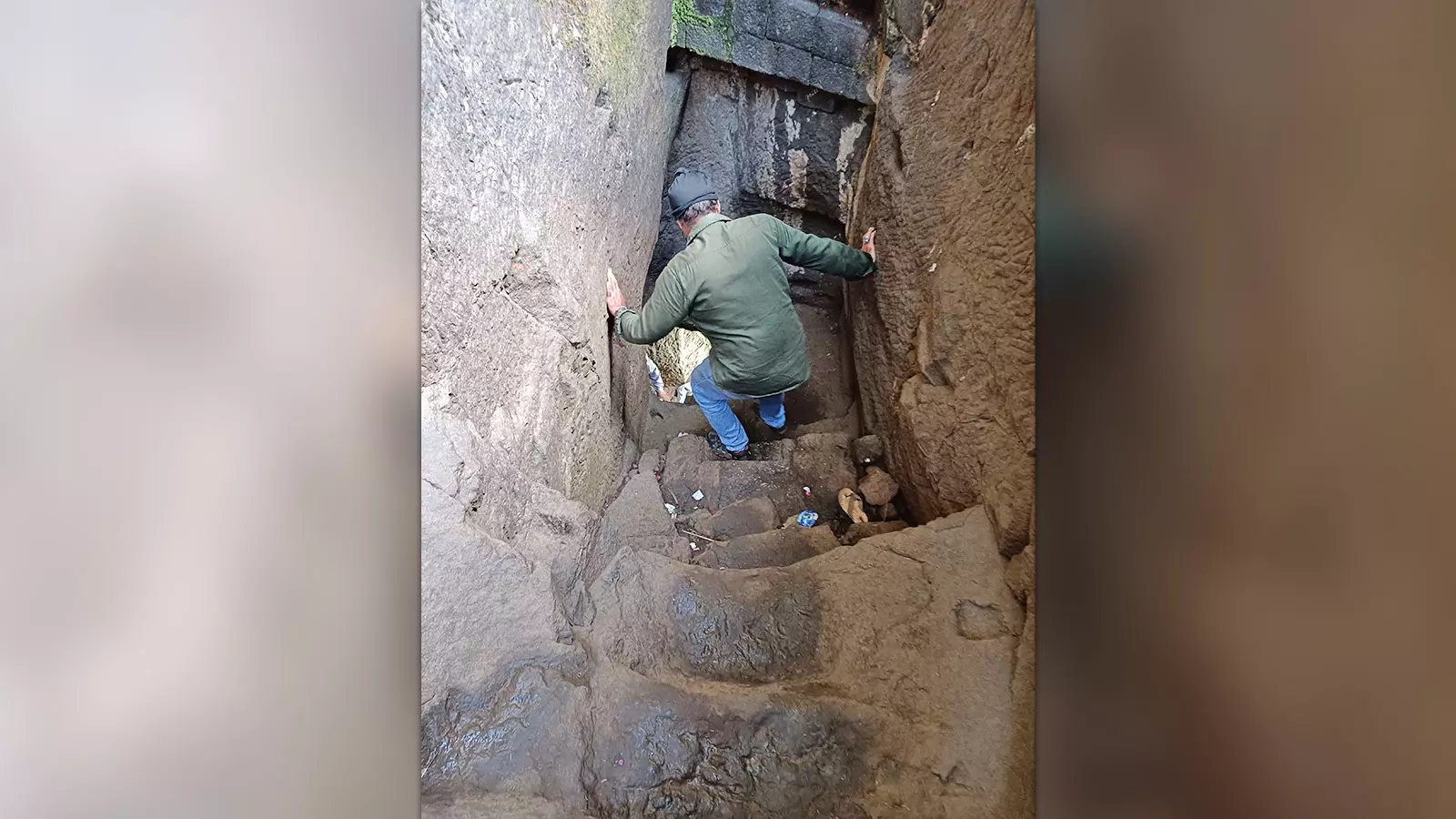
Trekking at the Harihar Fort is fraught with risks.
Asked what attracted him to the fort, Prashanth B, an onion exporter on his third trek, said, “It was raining when I first climbed the steps of the fort. Even though I could make up, I was not able to enjoy the panoramic view of the hills while climbing due to clouds. I also faced the same issue on my second trip. But today, I was lucky. It was really worth climbing Harihar Fort because it is a one-of-its-kind experience,” said the 51-year-old, who lives in Nashik. “The fort attracts youngsters a lot these days. They come here with a strong sense of confidence. Many know that the climb is not going to be easy, but they take up the challenge. This shows how the youth take nature seriously. While climbing each step, they get involved with nature. And this connection makes many visit the site again,” added Prashanth.
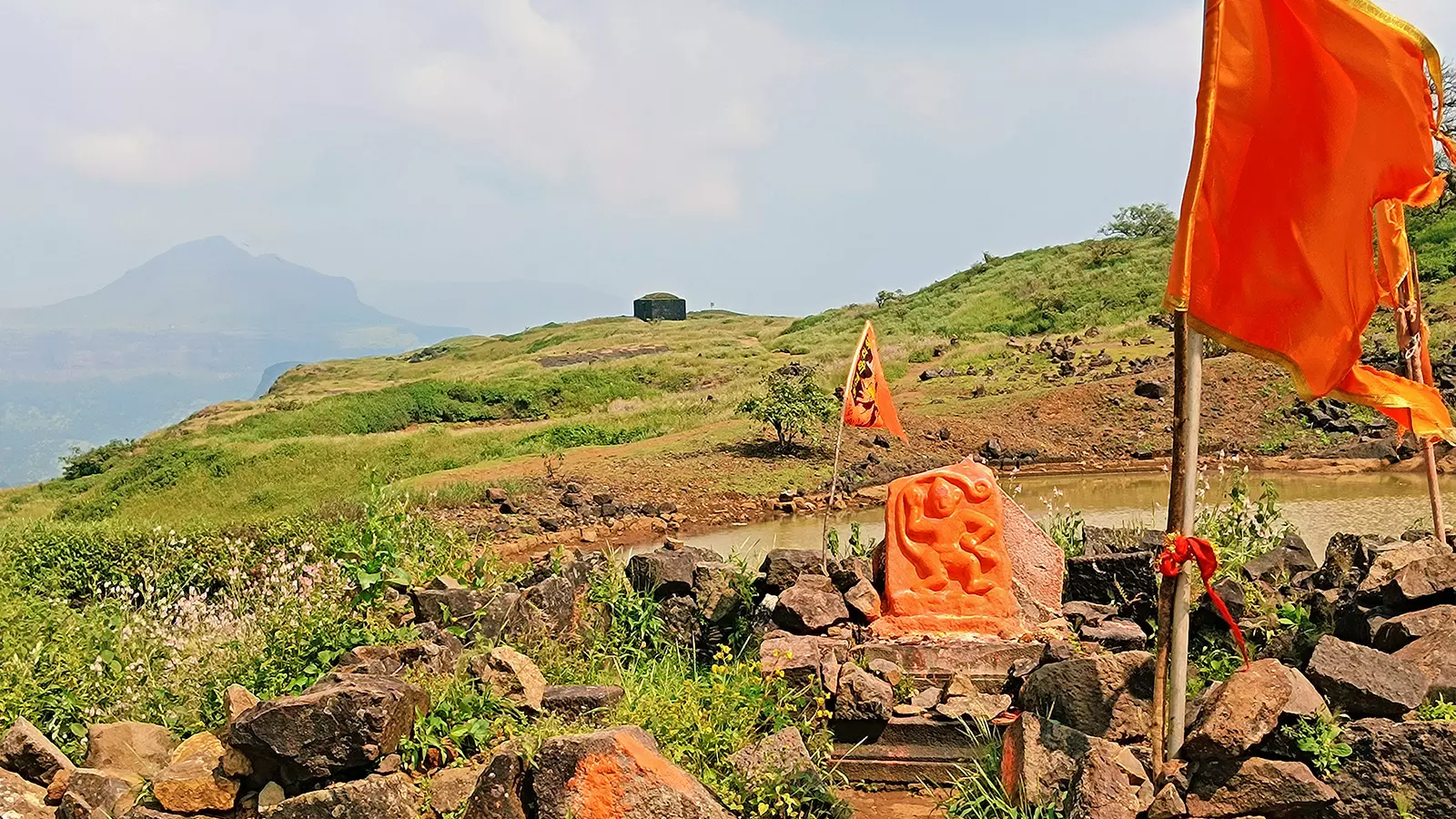
Historians say a detailed study about the Harihar Fort is the need of the hour.
One has to get an entry pass by paying Rs 30 at the office of the Joint Forest Management (JFM) in Harshewadi, 13 km from Trimbakeshwar, a place which is known for its Shiva temple, one of the 12 ‘Jyotirlingas’. From Harshewadi, one has to trek 2.5 km to reach the base of the fort, from where the adventure begins. The steps are so narrow at many places and they don’t let two people pass through them easily. Proper coordination is essential here. Many follow the tips properly while climbing up the steps. Once you finish the steps, you get into a cave-like structure from where you enter a narrow stretch. This is the most dangerous stretch, as there is no wall on the side. So don’t go to the edge. The climb never ends here. You need to walk through the edges of rocks to reach atop the fort, where you can see an abandoned structure built in rock and a set of water tanks.
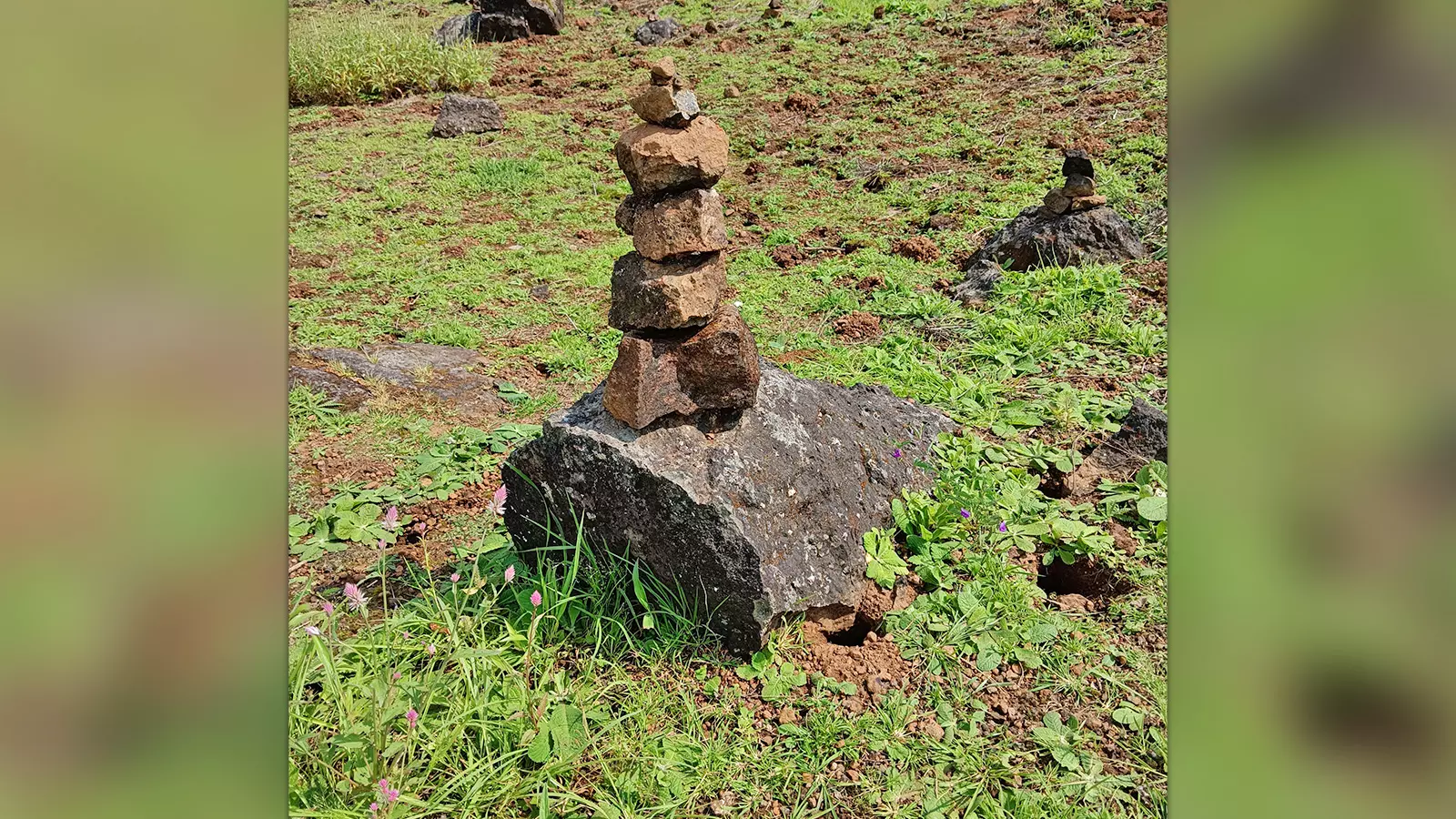
At the fort, there is an area where stacked stones in different sizes are seen. People stack stones to fulfil their wishes.
Although the fort is believed to have been built during the time of the Yadava dynasty, it was later occupied by the others, and the British started controlling the fort under Captain Briggs from 1818. Historians say a detailed study about the Harihar Fort is the need of the hour. “The presence of water ponds points towards human habitation on top of the fort. I don't think it was just a watchtower to keep a check on the movement of trade through the Gonda region below. It is good that youngsters use the fort as a trekking spot, but at the same time, the historical significance of the fort can also be studied in detail,” said Akash Trivedi, a retired history professor based in Mumbai. A little away from the big pond, there is an area where stacked stones in different sizes are seen. People stack stones to fulfil their wishes. Some believe stacked stones are a symbol to identify the route.
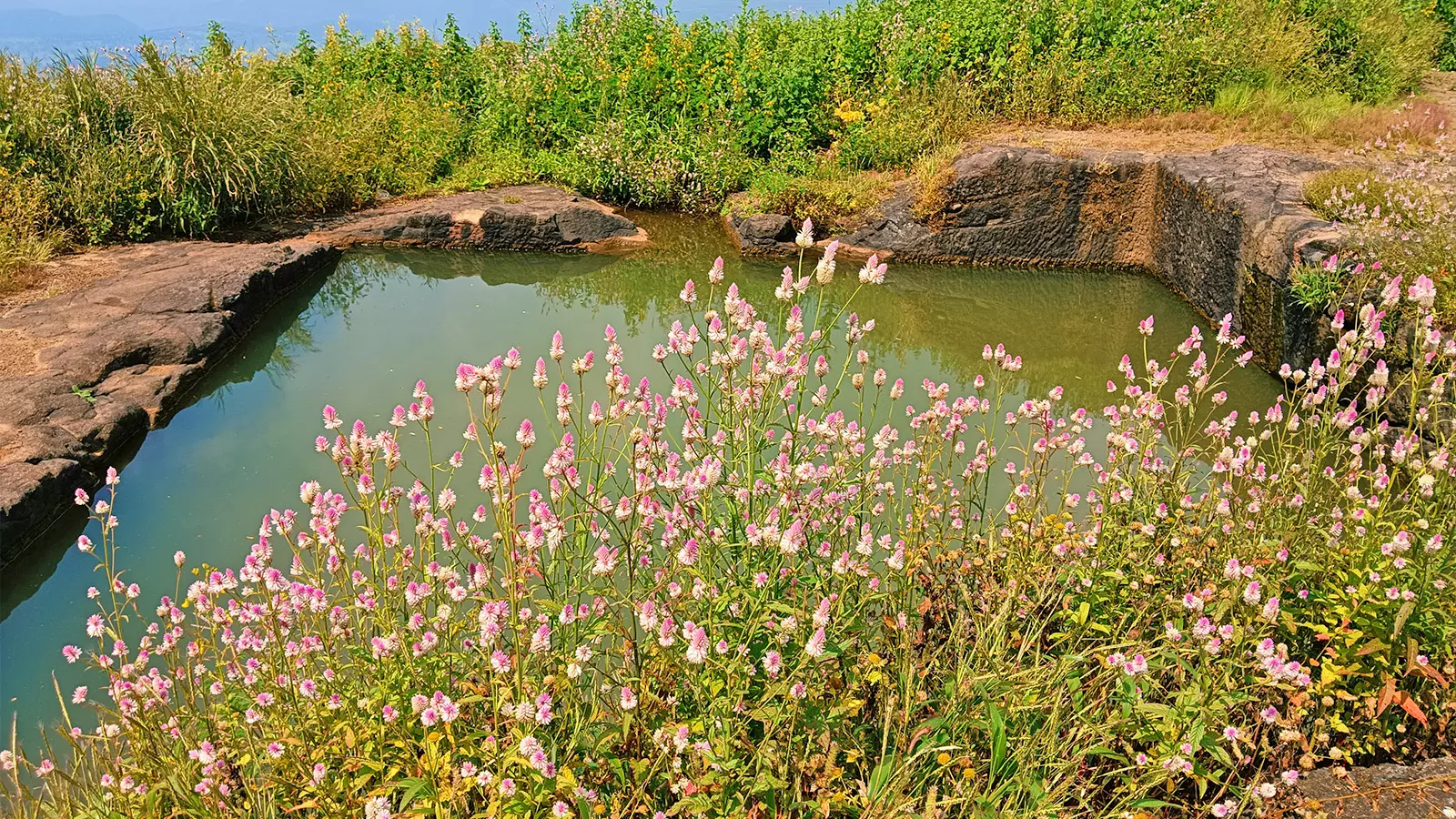
Experts say the presence of water ponds points towards human habitation on top of the fort.
Even though climbing the steps of the Harihar Fort is a great experience, some people are concerned about the lack of safety measures. “I have nothing against trekking but there are no safety measures for the trekkers here. No handrails, no ropes. There is also no regulation for trekkers here. I have seen huge crowds going up and down during the weekends. The forest department must take care of it otherwise the trekking can be disastrous,” said Aravind Kumar, a software employee in Pune.
S Balaji, however, disagrees. “Trekking involves risk. We follow the safety tips properly. I am here from Tamil Nadu and this is my fourth trek to the Harihar Fort. I did all my trek barefoot. But at the same time, I follow the safety tips properly. If you are confident, you can do it without any trouble,” he said. Opinions on the safety aspects vary, but one thing is sure. The fort has become a place for the youngsters to check their physical and mental agility.

